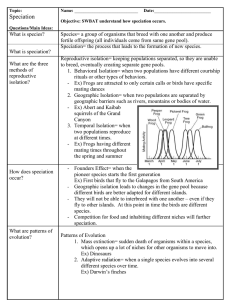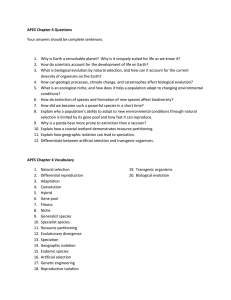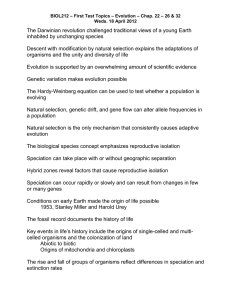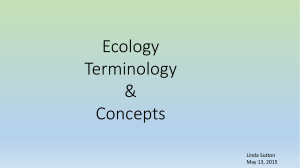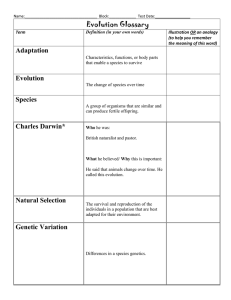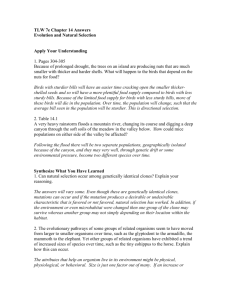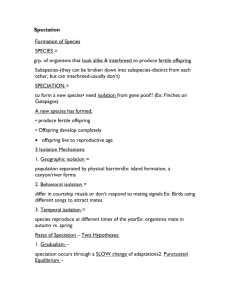Speciation A species is a group of organisms that breed with... offspring (all individuals come from same gene pool).
advertisement
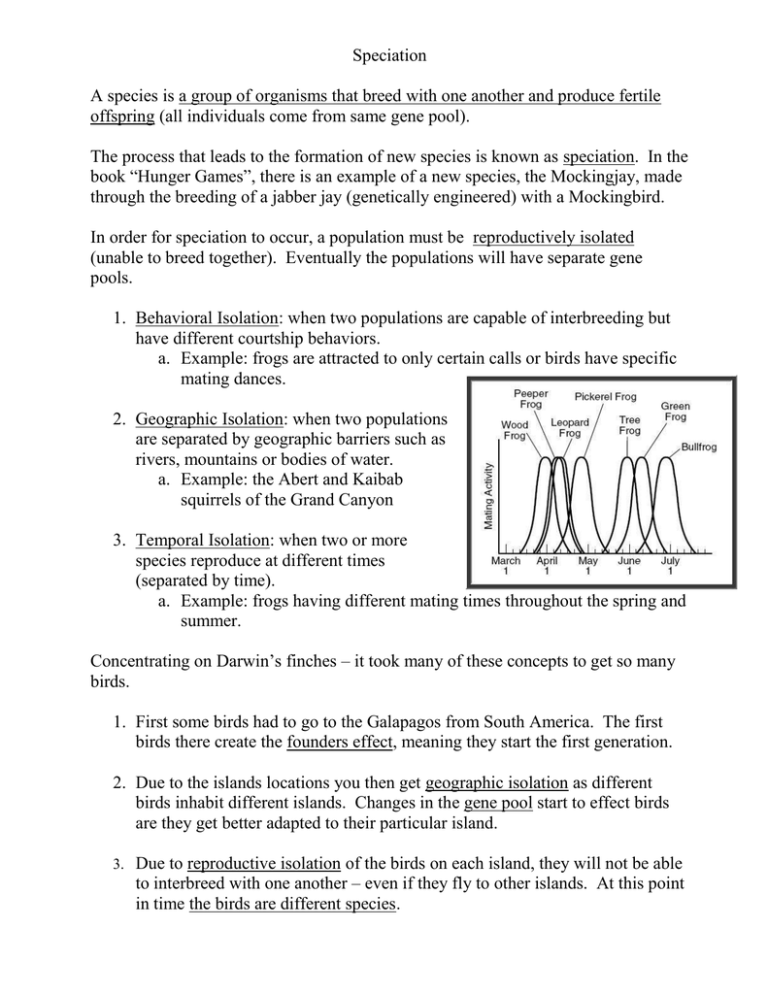
Speciation A species is a group of organisms that breed with one another and produce fertile offspring (all individuals come from same gene pool). The process that leads to the formation of new species is known as speciation. In the book “Hunger Games”, there is an example of a new species, the Mockingjay, made through the breeding of a jabber jay (genetically engineered) with a Mockingbird. In order for speciation to occur, a population must be reproductively isolated (unable to breed together). Eventually the populations will have separate gene pools. 1. Behavioral Isolation: when two populations are capable of interbreeding but have different courtship behaviors. a. Example: frogs are attracted to only certain calls or birds have specific mating dances. 2. Geographic Isolation: when two populations are separated by geographic barriers such as rivers, mountains or bodies of water. a. Example: the Abert and Kaibab squirrels of the Grand Canyon 3. Temporal Isolation: when two or more species reproduce at different times (separated by time). a. Example: frogs having different mating times throughout the spring and summer. Concentrating on Darwin’s finches – it took many of these concepts to get so many birds. 1. First some birds had to go to the Galapagos from South America. The first birds there create the founders effect, meaning they start the first generation. 2. Due to the islands locations you then get geographic isolation as different birds inhabit different islands. Changes in the gene pool start to effect birds are they get better adapted to their particular island. 3. Due to reproductive isolation of the birds on each island, they will not be able to interbreed with one another – even if they fly to other islands. At this point in time the birds are different species. 4. Competition for food and inhabiting different niches will further speciation. Patterns of Evolution We don’t just wake up one day and decide that it’s a good day to evolve – it is a long slow process that happens in multiple ways. This is referred to as macroevolution – or evolution as a big picture. It happens in six ways. 1. Mass extinction: organisms go extinct all the time (think dinosaurs). This opens up a lot of niches for other organisms to move into. 2. Adaptive radiation: when a small group or a single species evolve into several different forms that live in different ways, for example Darwin’s finches. Think of many different lines coming from one starting point. 3. Convergent Evolution: when unrelated organisms resemble one another, so two very different organisms come up with the same body plan. For example, dolphins and sharks. They have very similar body plans, but one is a mammal and one is a fish – so same concept, different design. 4. Coevolution: when two species evolve in response to changes in each other over time (so they evolve together). Symbiosis 5. Gradualism: refers to the speed of evolution. It suggests that organisms are always changing at a slow and constant pace. 6. Punctuated Equilibrium: also refers to the speed of evolution. There will be long periods of stabilization followed by short periods of rapid evolution.
